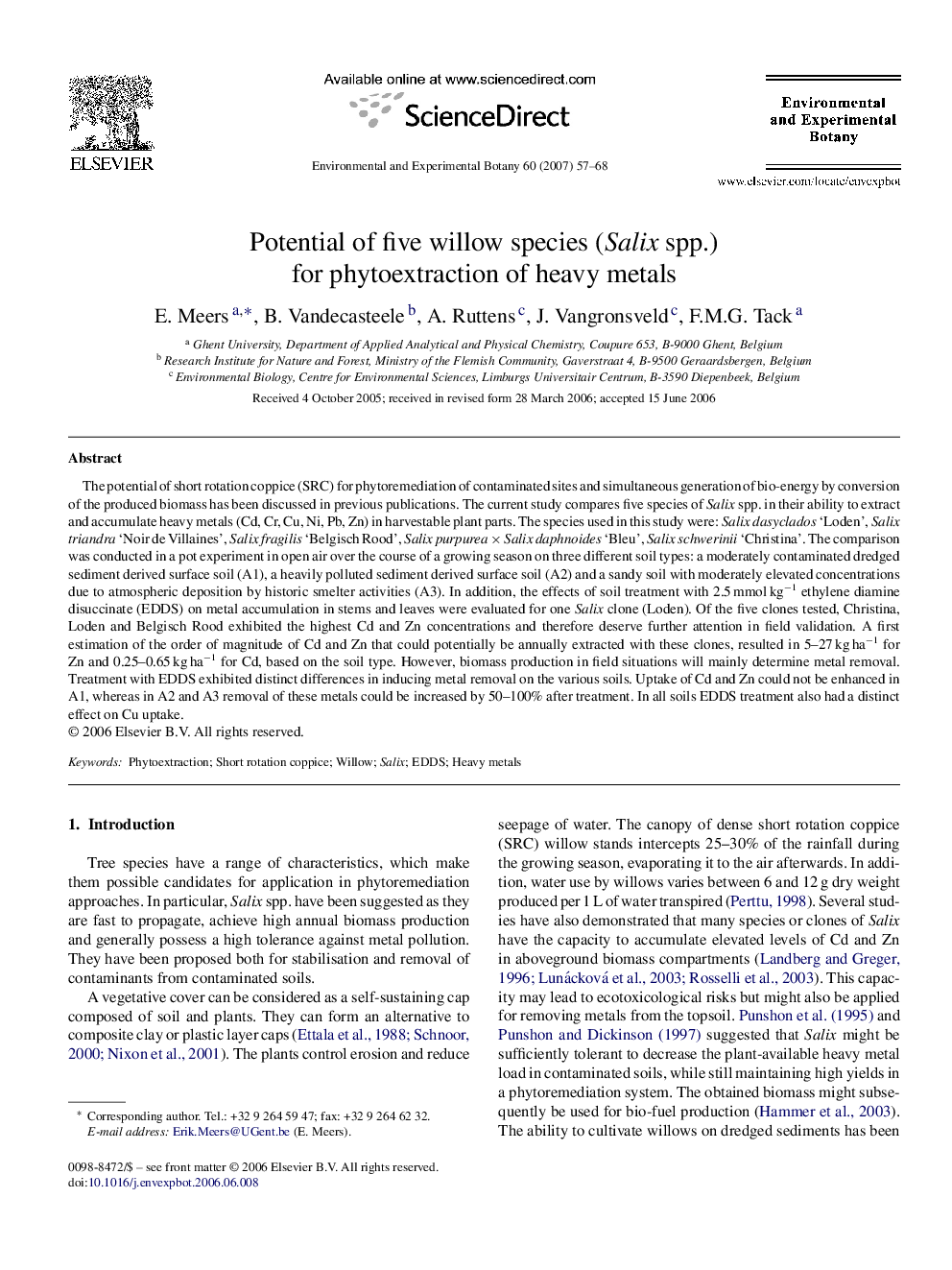| کد مقاله | کد نشریه | سال انتشار | مقاله انگلیسی | نسخه تمام متن |
|---|---|---|---|---|
| 4555624 | 1329270 | 2007 | 12 صفحه PDF | دانلود رایگان |

The potential of short rotation coppice (SRC) for phytoremediation of contaminated sites and simultaneous generation of bio-energy by conversion of the produced biomass has been discussed in previous publications. The current study compares five species of Salix spp. in their ability to extract and accumulate heavy metals (Cd, Cr, Cu, Ni, Pb, Zn) in harvestable plant parts. The species used in this study were: Salix dasyclados ‘Loden’, Salix triandra ‘Noir de Villaines’, Salix fragilis ‘Belgisch Rood’, Salix purpurea × Salix daphnoides ‘Bleu’, Salix schwerinii ‘Christina’. The comparison was conducted in a pot experiment in open air over the course of a growing season on three different soil types: a moderately contaminated dredged sediment derived surface soil (A1), a heavily polluted sediment derived surface soil (A2) and a sandy soil with moderately elevated concentrations due to atmospheric deposition by historic smelter activities (A3). In addition, the effects of soil treatment with 2.5 mmol kg−1 ethylene diamine disuccinate (EDDS) on metal accumulation in stems and leaves were evaluated for one Salix clone (Loden). Of the five clones tested, Christina, Loden and Belgisch Rood exhibited the highest Cd and Zn concentrations and therefore deserve further attention in field validation. A first estimation of the order of magnitude of Cd and Zn that could potentially be annually extracted with these clones, resulted in 5–27 kg ha−1 for Zn and 0.25–0.65 kg ha−1 for Cd, based on the soil type. However, biomass production in field situations will mainly determine metal removal. Treatment with EDDS exhibited distinct differences in inducing metal removal on the various soils. Uptake of Cd and Zn could not be enhanced in A1, whereas in A2 and A3 removal of these metals could be increased by 50–100% after treatment. In all soils EDDS treatment also had a distinct effect on Cu uptake.
Journal: Environmental and Experimental Botany - Volume 60, Issue 1, May 2007, Pages 57–68